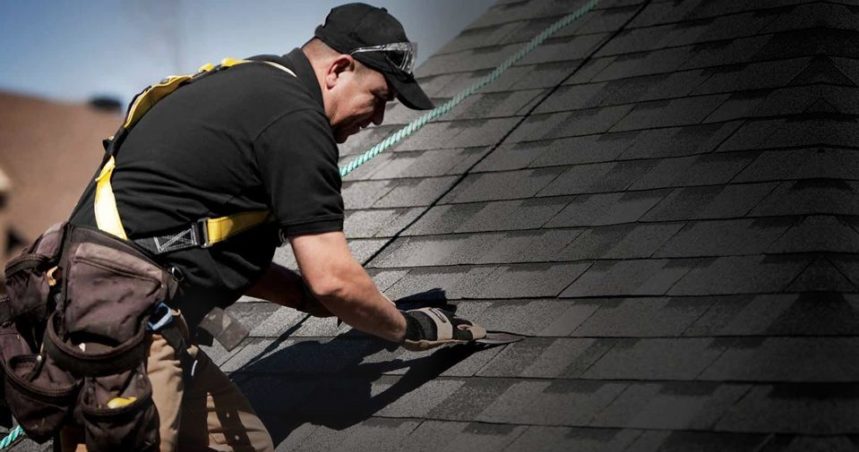Your roof can leak for a laundry list of reasons! With our 38 years roofing here on the beach we have found that if your roof is leaking it is most likely one of these 4 reasons:
1. Storm Damage
One of the most common ways a roof will leak is from storm damage. One form of storm damage is wind driven damage. Depending on the age of your roof and the type of shingle, some wind speeds will not be a concern where others can cause damage to your roof. Missing/wind damaged shingles will cause wind driven openings and allow water to enter your home. Hail is another common form of storm damage. Hail impacts to the roof will knock rock granular off of the shingles. The rock granular provides 2 functions. First, the rock granular gives your roof color. Second, the rock granular prevents harsh UV light from breaking down your shingles. Once the rock granules are knocked off during a hail event your shingles will deteriorate quicker and eventually cause leaks. Fallen objects such as trees, golf balls, and tree branches can also cause damage to your roof.
2. Wear and Tear
Wear and tear occurs on your roof over time as it is exposed to the harsh elements. Wind, rain, UV light and many other factors increase the amount of wear and tear on your roof. As your roof begins to age the fiberglass matt of the shingles will begin to be exposed. This is a key sign that you have excessive wear and tear on your shingles. You know that you have fiberglass exposed when you look up at a roof and you can see that it is shiny when the sun hits it just right. This fiberglass mat is a base layer of the shingle and it is not made to be exposed to UV light. This is a key sign that your roof is in need of replacement. As your shingles wear you can also have nail pops that cause leaks. The nails on your shingles will begin to “pop” up with an older roof. The reason this will occur is because the steel nails expand and contract at a different rate than the wood roof deck does. This happens because the nails are made of steel and the thermal expansion and contraction of the steel happens at a different rate than the wood. The nails will push out slowly, eventually causing leaks. Nail pops are a sign of wear and tear on your roof as well.
3. Improper Install
If your roof is leaking it could be from an improper install. The manufacturers install instructions require details that can be overlooked during an install. One of the most common install issues is improper nailing. When a roof is being installed the nails have to be installed in the nailing zone. If the nails are installed below the nailing zone, then those nails will be exposed to the
weather. This will cause the nails to rust and eventually cause leaks. If the nails are installed above the nailing zone, then the shingle underneath may not be hit. This can cause shingles to be blown off during a wind event. There can also be an issue if the nails are installed at an angle. Roofing nails have a larger head in comparison to framing nails for example. If the nail is
installed at an angle, the head of the nail will eventually push though the shingle above. The nail can also push through the shingle above if it is not driven deep enough. If the nail is not flat to the shingle it will eventually push through the shingle above from the constant heat the shingle comes in contact with. Lastly, if the nails are driven too deep it can cause wind driven
damage or cause shingles to slide. Of the install issues improper nailing is the most common.
4. Manufacturing Defect
On rare occasions your shingles can leak from a manufacturing defect. Manufacturing defects come in a variety of forms. One manufacturing defect is the shingles not sealing properly. On an asphalt shingle there is a bond line that bonds the shingles together. If there is an issue with the bond lines on the shingles then the shingles will not seal together properly. Without the shingles sealing together properly they will be prone to wind driven damage. If your roof has a manufacturing defect call a contractor or the shingle manufacturer immediately! You want to ensure that the manufacturing defects are addressed in a timely manner to ensure leaks do not occur.
Topics:








